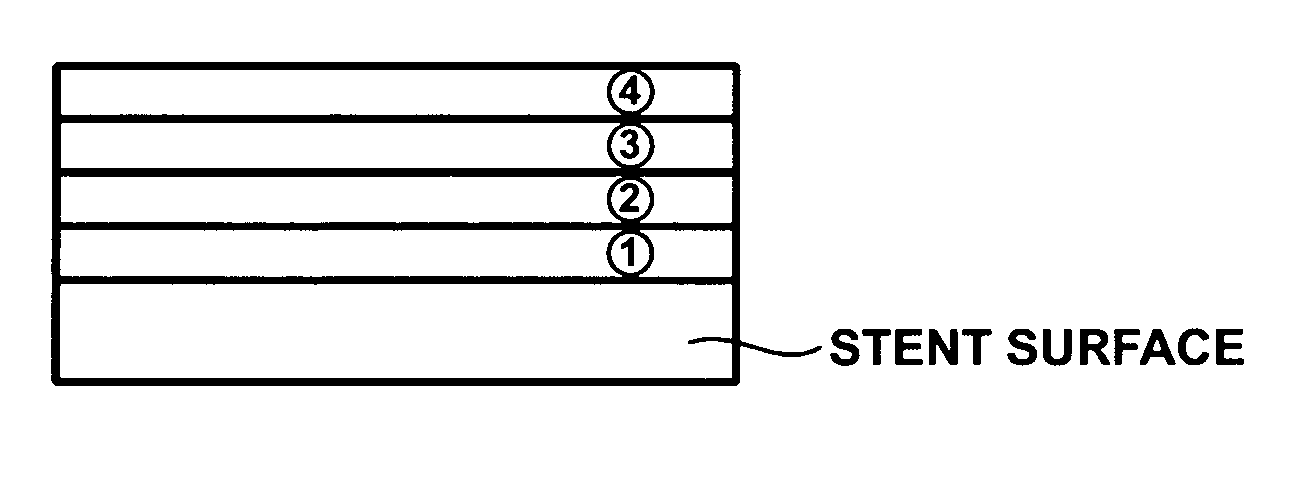Controllable drug releasing gradient coatings for medical devices
a technology of drug releasing gradient and medical devices, applied in the field of medical devices, can solve the problems of toxicity associated with systemic administration of known metabolic inhibitors, reformation of narrowing vascular deposits, and occlusion of vessels, and achieve the effect of preventing occlusion
- Summary
- Abstract
- Description
- Claims
- Application Information
AI Technical Summary
Benefits of technology
Problems solved by technology
Method used
Image
Examples
Embodiment Construction
[0022] The present invention provides controllable drug releasing medical coatings, controllable drug releasing coated medical implants, and methods for their manufacture and use where the release profile of one or more pharmaceutical compounds releasably bound to the implants can be controlled to provide more appropriate and desirable time released in situ drug delivery of effective amounts of the one or more pharmaceutical compounds.
[0023] In one exemplary embodiment of the present invention, the controllable drug releasing coating comprises two or more sequential layers provided on the surface of a medical device where the layers have different physical properties and at least one releasable pharmaceutical compound that is incorporated with at least one of the layers of the coating. Because the pharmaceutical compounds are incorporated with the coating layers, the release of these compounds is dependent upon the degradation rate of the coating layers. The degradation rate of the...
PUM
| Property | Measurement | Unit |
|---|---|---|
| molecular weight | aaaaa | aaaaa |
| molecular weights | aaaaa | aaaaa |
| molecular weights | aaaaa | aaaaa |
Abstract
Description
Claims
Application Information
 Login to View More
Login to View More - R&D
- Intellectual Property
- Life Sciences
- Materials
- Tech Scout
- Unparalleled Data Quality
- Higher Quality Content
- 60% Fewer Hallucinations
Browse by: Latest US Patents, China's latest patents, Technical Efficacy Thesaurus, Application Domain, Technology Topic, Popular Technical Reports.
© 2025 PatSnap. All rights reserved.Legal|Privacy policy|Modern Slavery Act Transparency Statement|Sitemap|About US| Contact US: help@patsnap.com



